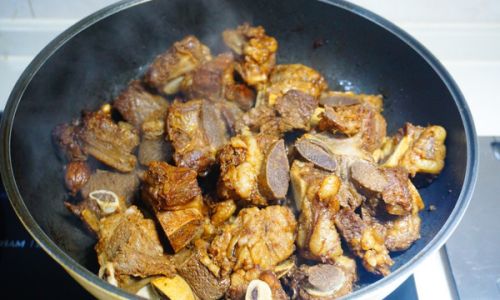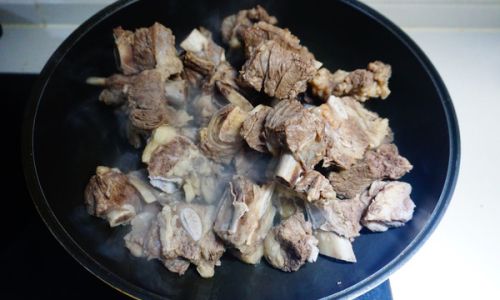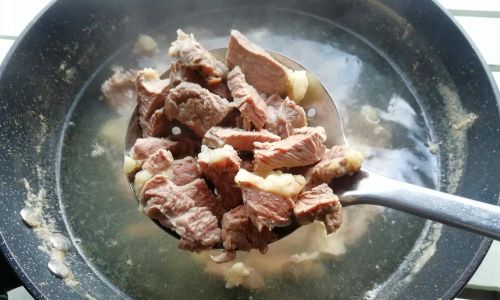Introduction
Stewed chicken, a dish that transcends cultural boundaries and culinary traditions, holds a special place in the hearts of food enthusiasts worldwide. Whether enjoyed as a hearty main course, a comforting snack, or a flavorful addition to a family gathering, its appeal lies in its ability to blend rich, savory flavors with the tender, succulent texture of perfectly cooked chicken. Achieving that perfect balance—a卤chicken that is both tender and delicious—requires a blend of meticulous preparation, the right ingredients, and patience. In this comprehensive guide, we will delve into the intricacies of making stewed chicken, exploring techniques, tips, and tricks that will elevate your culinary skills and ensure every bite is a delightful experience.

Understanding the Ingredients
Before diving into the cooking process, it’s crucial to understand the role each ingredient plays in creating a flavorful and tender stewed chicken.
-
Chicken Selection: The foundation of any stewed chicken dish is, of course, the chicken itself. Opt for a whole chicken or chicken parts that have a good ratio of meat to bone, such as drumsticks, thighs, and wings. These cuts not only provide more flavor due to their higher fat content but also benefit from longer cooking times, becoming incredibly tender.
-
Aromatics: Garlic, ginger, onions, and shallots form the backbone of the stew’s aroma and flavor. They should be finely chopped or pounded to release their essential oils, enhancing the dish’s complexity.
-
Seasonings: Soy sauce, oyster sauce, fish sauce, and dark soy sauce add depth and umami, while white pepper, five-spice powder, and star anise infuse the dish with traditional Asian flavors. Adjust the quantities based on personal preference and the intensity of flavors desired.
-
Liquid Elements: Chicken broth or stock serves as the base for the stew, providing essential moisture and flavor. Beer, rice wine, or Shaoxing wine can also be used for added complexity and subtle sweetness.
-
Thickening Agents: Cornstarch slurry or potato starch can be used to thicken the sauce towards the end of cooking, ensuring a glossy, velvety texture.
Preparation Techniques
-
Marinating: Marinating the chicken in a mixture of soy sauce, Shaoxing wine, garlic, ginger, and a pinch of sugar for at least an hour allows the flavors to penetrate deeply, enhancing both taste and texture.
-
Blanching: Blanching the chicken pieces in boiling water for a few minutes before stewing helps to remove impurities, tighten the meat, and prevent it from becoming overly mushy during the long cooking process.
-
Searing: Browning the chicken pieces in a hot pan with a bit of oil caramelizes the exterior, adding another layer of flavor and color to the dish.
The Cooking Process
-
Sautéing Aromatics: Begin by heating oil in a heavy-bottomed pot or wok over medium heat. Add chopped garlic, ginger, onions, and shallots, sautéing until fragrant and lightly golden. This step is crucial as it builds the foundation of the stew’s aroma.

-
Adding Chicken: Once the aromatics are fragrant, add the seared chicken pieces to the pot, stirring to coat them evenly with the aromatic oils. This helps to seal in juices and further develop the flavors.
-
Deglazing: Pour in a splash of Shaoxing wine or beer, stirring vigorously to scrape up any browned bits stuck to the bottom of the pot. This adds another layer of flavor and helps prevent the stew from burning.
-
Adding Broth and Seasonings: Gradually pour in the chicken broth or stock, ensuring it covers the chicken by at least half. Add soy sauce, oyster sauce, fish sauce, dark soy sauce for color, white pepper, five-spice powder, and star anise. Bring the mixture to a gentle simmer.
-
Simmering: Lower the heat to maintain a gentle simmer. Cover the pot and allow the chicken to stew slowly, preferably for at least an hour or until the meat is falling-off-the-bone tender. The longer, slower cooking process allows the flavors to meld together and the chicken to absorb all the delicious juices.
-
Taste and Adjust: After an hour, taste the stew and adjust the seasoning as needed. If the sauce is too thin, you can thicken it with a cornstarch slurry. If it lacks flavor, add more soy sauce or a touch of fish sauce.
-
Final Touches: Once the chicken is tender and the sauce has reached your desired consistency, remove the pot from heat. If desired, garnish with chopped green onions, cilantro, or sesame seeds for a burst of freshness and color.
Serving Suggestions
Stewed chicken is versatile and pairs beautifully with a variety of sides. Serve it over a bed of steamed rice for a classic combination, or enjoy it with noodles, dumplings, or even a simple green salad. For a more indulgent meal, pair it with stir-fried vegetables or a side of crispy fried tofu.
Storage and Reheating
Leftover stewed chicken can be stored in an airtight container in the refrigerator for up to three days. To reheat, gently warm it in a covered pot on the stovetop over low heat, adding a splash of broth or water if necessary to maintain its moisture. Avoid microwaving as it can make the meat dry and tough.
Conclusion
Mastering the art of tender and delicious stewed chicken is a rewarding culinary journey that combines precision, patience, and a love for flavor. By understanding the role of each ingredient, meticulously preparing the chicken, and carefully controlling the cooking process, you can create a dish that is not only a feast for the senses but also a testament to your culinary prowess. Whether you’re feeding a family, entertaining friends, or simply treating yourself, stewed chicken offers a comforting, satisfying experience that is sure to become a staple in your kitchen. Happy cooking!





0 comments